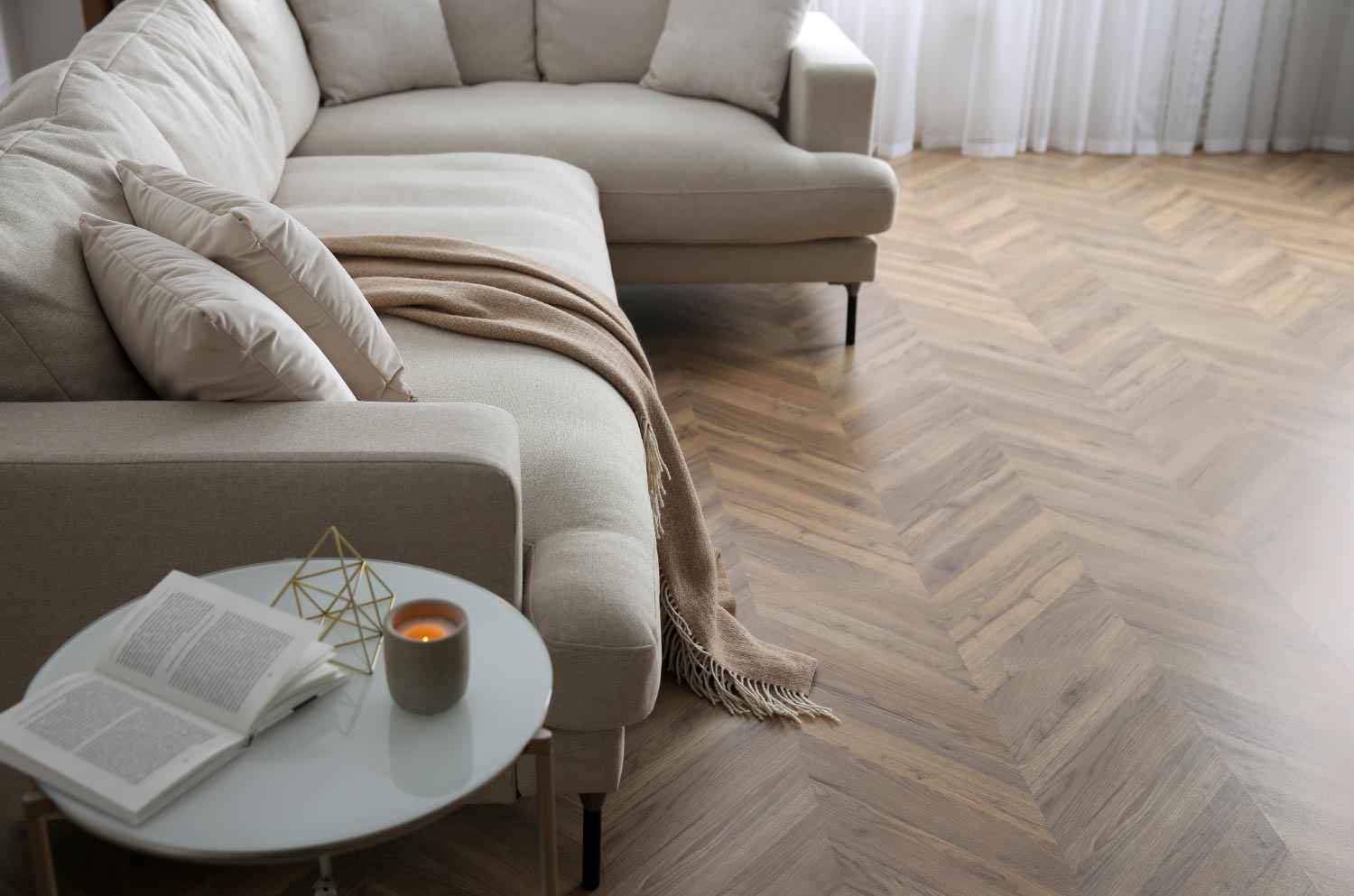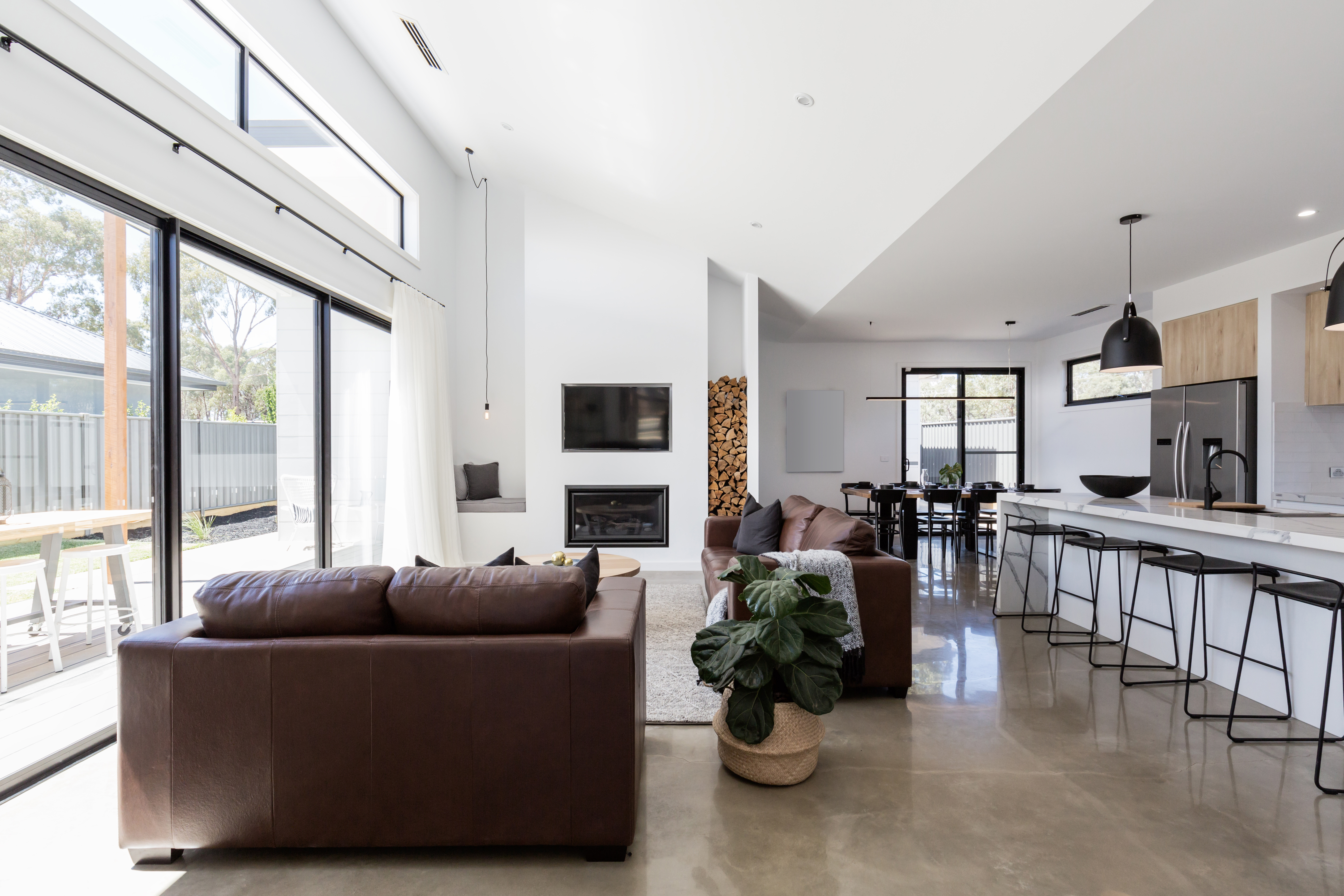
The cost to rip up carpets and install laminate depends on factors like labor prices, materials, and location. Use this guide to get a detailed cost overview.
Vinyl flooring installation costs $2,523 on average, with homeowners paying between $350 and $8,950. Your total depends on floor size, vinyl type, and labor rates.


Vinyl flooring installation costs depend on room size, vinyl type, and labor.
Ranging from $2 to $22 per square foot with labor, a new vinyl floor can refresh your space and offer water resistance for busy households.
Professional installation ensures proper fit and long-term performance.
Upgrading to luxury vinyl can boost home value and appeal.
Proper prep and maintenance extend vinyl flooring lifespan.
This article was created using automation technology and thoroughly fact-checked and edited by an Angi Editor in accordance with our AI policy.
Vinyl flooring installation cost averages $2,523, with homeowners spending between $1,008 and $4,052 on average. Prices range from $2 to $22 per square foot installed, depending on the type of vinyl, room size, and labor rates. Understanding these costs helps you plan your vinyl flooring project with confidence. Whether you want to DIY or hire a pro, this guide explains every cost detail so you can make the best decision for your home.
The size of your vinyl flooring project is the most significant factor in determining overall cost. Larger rooms require more material and labor, driving up the total price. Even small spaces come with minimum project fees, so it’s important to measure carefully and consider your needs.
Kitchens, bathrooms, and living rooms all have different average square footage, which impacts your budget. If you are installing vinyl flooring throughout several rooms or an entire home, contractors may offer bulk pricing, but the total investment will rise. Single-room projects tend to cost less overall but may have a higher price per square foot due to minimum charges.
| Area | Square Feet | Material Cost |
|---|---|---|
| Bathroom | 40 | $100–$600 |
| Kitchen | 150 | $150–$2,000 |
| Bedroom | 200 | $200–$2,400 |
| Living room | 300 | $300–$3,600 |
| Whole home | 1,000 | $1,000–$12,000 |
When ordering flooring materials, first measure the square footage of the floor space. You may need to add an extra 10% for wastage during the installation process. A flooring pro can provide guidance for more challenging layouts or stairs.
Vinyl flooring is available in several types and a wide variety of designs, each with their own costs. Basic sheets cost as little as $1 to $2 per square foot. Upgrading to luxury vinyl plank (LVP), luxury vinyl tile (LVT), or waterproof vinyl increases material costs by up to $12 per square foot, since these options are thicker and more durable.
| Vinyl Type | Cost per Sq. Ft. |
|---|---|
| Sheet | $1–$2 |
| Vinyl composite | $1–$4 |
| Luxury vinyl tile | $1.50–$12 |
| Luxury vinyl planks | $1.50–$12 |

Several factors influence vinyl flooring installation cost, from labor to material upgrades and project complexity. Understanding each factor helps you anticipate your final price and avoid surprises.
Vinyl flooring can be installed by specialized vinyl flooring contractors, general contractors, or handymen. Labor rates range from from $1 to $10 per square foot, not including materials, or as hourly or flat fees for complex jobs. Small projects may have minimum labor charges to cover setup and travel. Regional labor rates can vary, with urban areas tending to cost more.
The installer’s experience and certification may increase costs, but it results in a higher-quality, longer-lasting floor. Complex layouts, stairs, or custom patterns require extra time and skill, raising labor fees.
Permits are not always required for vinyl flooring installation, but some municipalities require them for larger remodels or when subfloor work is involved. Contractors often handle permit applications, but homeowners should confirm this to avoid delays or fines. Failing to secure necessary permits can lead to penalties or problems when selling your home.
Custom patterns, borders, or inlays add both material and labor expenses. Integrated underlayment or soundproofing features can also raise the price by $0.50 to $2 per square foot.
If you want heated floors, ensure your chosen vinyl is compatible and budget for extra installation costs. Transition strips, baseboards, and trim may be additional line items, charged per linear foot.
Site preparation is essential—subfloor repair, leveling, or moisture mitigation adds to the total cost. Removing old flooring, delivery fees, and post-installation cleanup or disposal can also affect your bottom line. Some contractors charge for professional measurement, design consultation, or subfloor inspection, especially if moisture issues are suspected.

Beyond materials and labor, several ongoing and upfront costs should be included in your vinyl flooring installation budget.
Many vinyl flooring products come with manufacturer warranties, covering defects for 10 to 20 years. Contractors may also offer installation warranties, providing peace of mind against poor workmanship. Always review what is covered and excluded, as warranties don't include water damage or improper maintenance.
Vinyl flooring is known for low maintenance, but you’ll still need to invest in cleaning products and protective pads for furniture. If you opt for radiant heating under vinyl, consider the minor increase in energy costs, as well as the need for compatible flooring.
Routine care for vinyl flooring is straightforward—regular sweeping and occasional damp mopping with approved products. Most homeowners have minimal maintenance expenses for vinyl flooring. If a plank or tile is damaged, vinyl floor repair costs range from $2 to $9 per square foot, depending on the extent. Replacing sections of vinyl flooring costs less than full replacement but can add up for widespread damage.
Sales tax applies to both materials and installation services, with rates varying by location. Local tax rates can change your total project cost by several hundred dollars, especially for larger jobs. Be sure to ask your contractor for a breakdown that includes tax.
Homeowners insurance doesn't cover installation costs, but it may cover damage from certain events, like flooding or fire. Contractors should carry liability and workers’ compensation insurance during installation to protect you from accidents. If you need to file an insurance claim for flooring damage, deductibles and coverage limits can impact your out-of-pocket costs.
Installing vinyl flooring yourself can save on labor costs, but it requires time, skill, and the right tools. Let’s compare both options so you can choose what works best for your home.
DIYers pay for materials, plus tools like utility knives, rollers, and adhesives. Skipping professional labor can save $1 to $10 per square foot, but mistakes can lead to wasted material or uneven floors. DIY projects require several hours to several days, depending on room size and your experience.
Professional vinyl flooring installation is a bigger upfront cost, but you benefit from expert fit, faster turnaround, and warranty coverage. For large or complex projects, hiring a pro is the best way to ensure a high-quality result and protect your investment.
| Installation Method | Cost per Sq. Ft. | Pros | Cons |
|---|---|---|---|
| DIY | $1–$12 | Lower cost, flexible timing | Risk of mistakes, no labor warranty |
| Pro | $2–$22 | Quality, warranty, less stress | Higher upfront cost |
Deciding whether to repair or replace your vinyl flooring depends on the extent and type of damage. Small scratches, dents, or isolated issues can be repaired by replacing a few planks or tiles, which is more affordable than a full replacement.
If your floor has widespread wear, water damage, or an outdated style, replacement is recommended. Age and warranty status are important—older floors or those out of warranty make replacement the smarter choice. As a rule of thumb, if repair costs exceed 50% of replacement, it’s best to invest in new flooring.
Installing new vinyl flooring can provide a solid return on investment (ROI), especially if you choose high-quality materials and professional installation. Homeowners can expect an ROI of 60% to 80%, making vinyl a cost-effective upgrade compared to hardwood or tile.
New vinyl floors improve home value by appealing to buyers who want durability, easy maintenance, and modern style. While hardwood floors may have a slightly higher ROI, vinyl offers great value with lower upfront costs. Factors that influence your ROI include the quality of vinyl, installation workmanship, current design trends, and the overall condition of your home.
Beyond value, vinyl flooring offers safety benefits, universal design options for accessibility, and a wide range of colors and textures to suit any decor.
Streamline your vinyl flooring installation budget with these cost-saving strategies:
Shop for vinyl flooring during sales or off-season promotions.
Choose standard designs or materials over premium/luxury options.
Remove old flooring yourself to save on labor costs, and prepare the subfloor and clear the space before installation.
Get multiple quotes from local flooring contractors.
Bundle vinyl flooring installation with other home improvement projects.
Opt for click-lock or peel-and-stick vinyl for easier, lower-cost installation.
Maintain your floors properly to avoid premature replacement.
Home is the most important place on earth, which is why Angi has helped more than 150 million homeowners transform their houses into homes they adore. To help homeowners with their next project, Angi provides readers with the most accurate cost data and upholds strict editorial standards. We’ve surveyed thousands of real Angi customers about their project costs to develop the pricing data you see, so you can make the best decisions for you and your home. We pair this data with research from reputable sources, including the U.S. Bureau of Labor Statistics, academic journals, market studies, and interviews with industry experts—all to ensure our prices reflect real-world projects.
Want to help us improve our cost data? Send us a recent project quote to [email protected]. Quotes and personal information will not be shared publicly.
From average costs to expert advice, get all the answers you need to get your job done.

The cost to rip up carpets and install laminate depends on factors like labor prices, materials, and location. Use this guide to get a detailed cost overview.

Updated flooring can make any room in your home feel brand new. Explore flooring installation costs in St. Louis, MO, from materials to labor costs.

If your laminate is damaged, it’s time for repairs or replacement. This guide will show you everything you need to know about laminate floor repair costs.

Baseboards come in many styles and materials, giving your space a finished look. Learn about the types of baseboards, pros and cons, and when to choose each.

Learn how to fix scratches in bamboo flooring with these simple DIY strategies and what to do to prevent them from returning.

The best flooring to install over concrete can handle the material’s porosity. From vinyl to tile, this guide will run you through the best options.